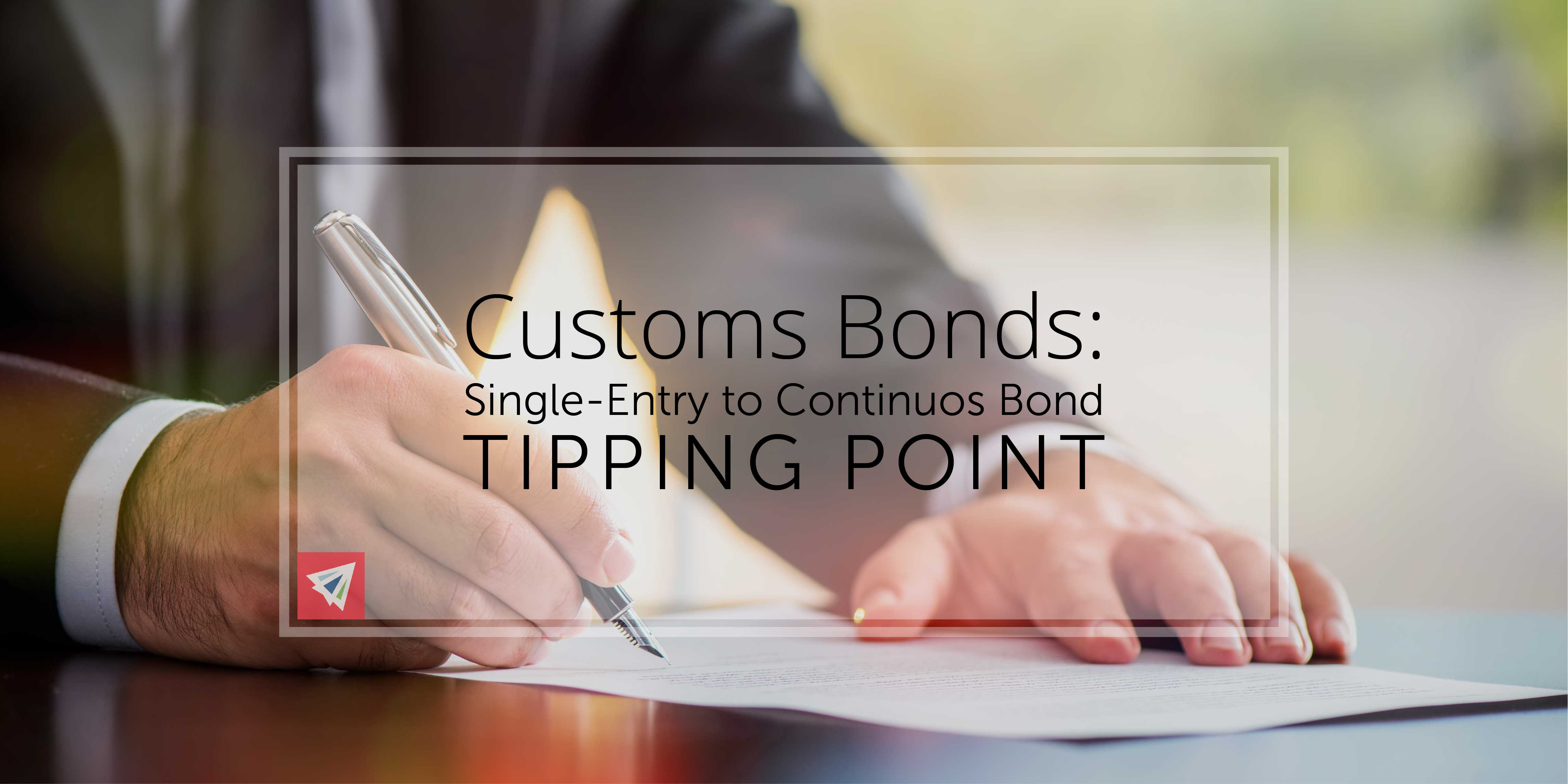Customs bonds are a simple but crucial topic in the shipping industry – particularly to those who deal with imports. According to United States Customs, any individual or company importing over $2,500 of goods in commercial value are required to purchase a customs bond. For many, it’s just another dollar sign on their shipping receipts, but to those who understand the topic thoroughly, bond costs can be effectively managed.
Not all bond prices are the same. Your shipment volume, type of commodities being shipped, risk and liability, and a variety of other factors all contribute to fluctuating bond prices. On top of this, your company has a choice between single-entry vs. continuous customs bonds. Single-entry (or single-transaction) customs bonds and customs bonds that are only valid for one shipment. More customs bonds must be purchased for additional future shipments. Continuous (or annual) customs bonds are customs bonds that are valid for all shipments within an entire year after their date of purchase.
Volume
One major “tipping point” for customs bonds involves the volume of shipments conducted in a year. As stated before, single-entry bonds are only usable for a single shipment. However, a “shipment” is counted per bill of lading. So while you may be importing multiple containers, if all those containers are listed under one Bill Of Lading, it still qualifies at one “shipment.”
A continuous, or annual customs bond is going to cover all shipments that occur within a year of the purchase date of the continuous bond. In other words, after the bond is purchased, there are no additional customs bond purchases that need to be made, as the bond will cover as few or many Bills Of Lading within this validity window.
Selecting a customs bond based on volume can be a bit tricky. Without any talk of price, the decision here really boils down to how much time and attention you have to the details of all your shipments. As a rule of thumb, single-entry bonds are better for companies that import less frequently while continuous bonds are more useful for companies that import many times throughout the year. But the real difference of selection has to do with the work associated with purchasing, filing, and keeping track of the customs bonds. If you import frequently and are not intimately interacting with all your shipments, purchasing, filing, and managing a single-entry bond for each individual shipment can be a headache.
Value of Goods
As we will cover later, the cost of a customs bond is a combination of a few factors; one of which includes the commercial value of the goods. Per CBP law, there are actual “maximums” when it comes to the commercial value of a shipment using a single-entry bond. This cut-off may fluctuate depending on the type of goods you are importing, where they are coming from, the liability and risk of the shipment, and other factors, but it’s smart to keep in your peripheral. If you are hesitant as to whether or not your shipment is expensive enough to reach this maximum, make sure to talk with your freight forwarder so you get everything squared away before you agree of a time of departure. It’s rare that shippers ever hit this commercial value threshold, but it is certainly something you don’t want to worry about late in the game.
Price
Don’t worry – we forgive you if you skipped the above sections to get here. We understand that money generally has the final “say-all” when it comes to decisions regarding logistics. Good news is – there’s answers!
Once again, the general rule of thumb: single-entry customs bonds for less frequent shippers, and continuous customs bonds for more frequent shippers. But even this guideline doesn’t do justice to the various situations in which the opposite might apply. All of it comes to how prices of customs bonds are determined.
The cost of a single-entry bond will be determined on the basis of two primary factors: the flat-rate charge associated with the bond plus a percentage charge based on the commercial value of the goods. This additional charge could range from 5%-20% of the commercial value of the goods depending on the risk of the shipment, type of goods being shipped, etc.
Continuous customs bond prices are usually charged as a flat-rate. However, once again, variable such as the risk, liability, goods, country of origin, and other factors can all contribute to discounted or marked up prices. Continuous customs bonds start at around $500 at lowest and go up from there based on above stated factors.
Conclusion
We understand that customs bonds aren’t usually a shipper’s top concern, but learning more about the topic can empower buyers and sellers to make more educated selections. The primary factors that may dictate the tipping point from single-entry bonds to continuous bonds are your volume of shipments, commercial value of the goods you are shipping, and the price of the customs bonds for your shipments. A very simplified guideline is that single-entry customs bonds are better for businesses that import less frequently, while continuous (or annual) customs bonds are better for companies that import very frequently throughout the year.
If you have any customs bond questions or would like help attaining one, please reach out to one of our team members and we would be happy to help you out!
